From 2004 until 2010, school children around the globe would learn from their geography teachers that the tallest building in the world was in Taipei.
Although construction of what was then called the Taipei World Finance Tower was not without mishap — in 2002, an earthquake caused a crane to fall, crushing vehicles below and causing five fatalities — the completed tower was designed to be both typhoon and earthquake resilient. The latter quality was commented upon by several journalists in the wake of the 7.2 magnitude earthquake that struck Hualien County (花蓮) on April 3.
Not only was Taipei 101 built to last, it was also designed to look good — the repeated segments of its exterior recalling the eaves of an ancient pagoda, or a stalk of bamboo, endower the building a strong sense of place while making it immediately identifiable.
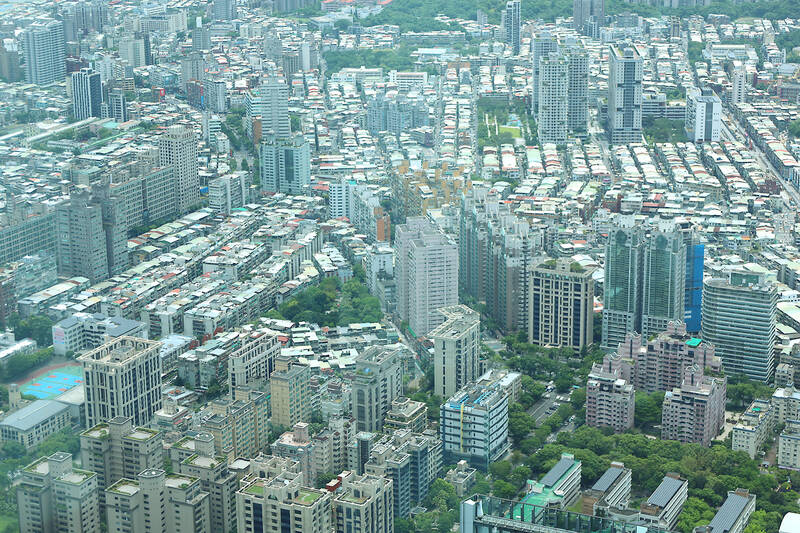
Photo: Thomas Bird, Taipei Times
What is striking, however, some 20 years after first opening its doors, Taipei 101 remains the only supertall structure in the neighborhood, not to mention, the only tall building with any serious aesthetic charm.
The tower’s elevator delivers visitors to the 89th floor observatory, from where an unrivalled vista of Taipei can be enjoyed. The experience remains a “must-do” on many tourists’ bucket list. Yet notwithstanding some “wows” and selfie-stick portraiture, the 360-degree vista reveals a vision of turn-of-the-century utopianism betrayed.
Put simply, Taipei doesn’t reach for the stars, it sprawls.
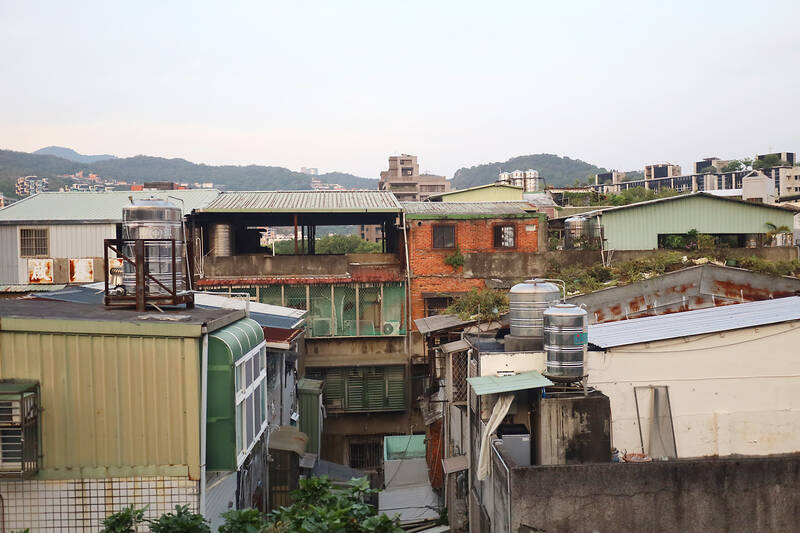
Photo: Thomas Bird, Taipei Times
VERTICAL VIRTUE
One of the main criticisms aimed at tall cities is that they can be ugly, soulless places. Certainly, we only need look across the strait to see countless examples of this — urban expanses where developers have unsentimentally turned ancient cities into forests of identikit concrete high-rises.
However, much of the People’s Republic of China’s (PRC) hellscape urbanism is the result of unimaginative planners in cahoots with an ill-regulated real estate sector, rather than the fault of the skyscraper per se.
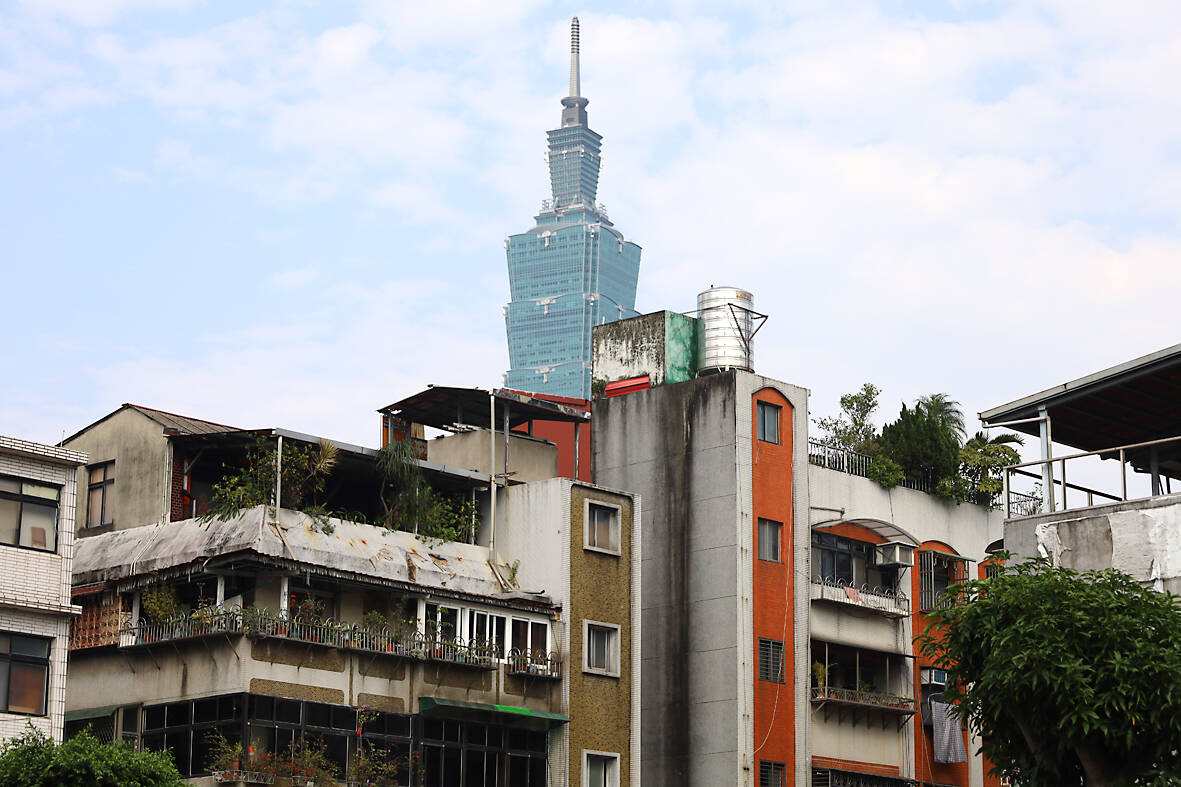
Photo: Thomas Bird, Taipei Times
One only need head south to Hong Kong’s Victoria Harbor to see a skyscraper cluster that is as iconic as any cherished old-world city. Indeed, Hong Kong Island is far more attractive than the bland expanses of Houston and other car-centric cities that blemish the American landscape.
By contrast, the US’s principle vertical metropolis, New York, is a concrete totem of American prowess, and remains one of the most productive and creative cities on the continent, in part, due to the way New Yorkers live.
“Cities are ultimately about the connections among people,” writes Edward Glaeser in Triumph of the City (2011), “but structures […] make those connections easier.”
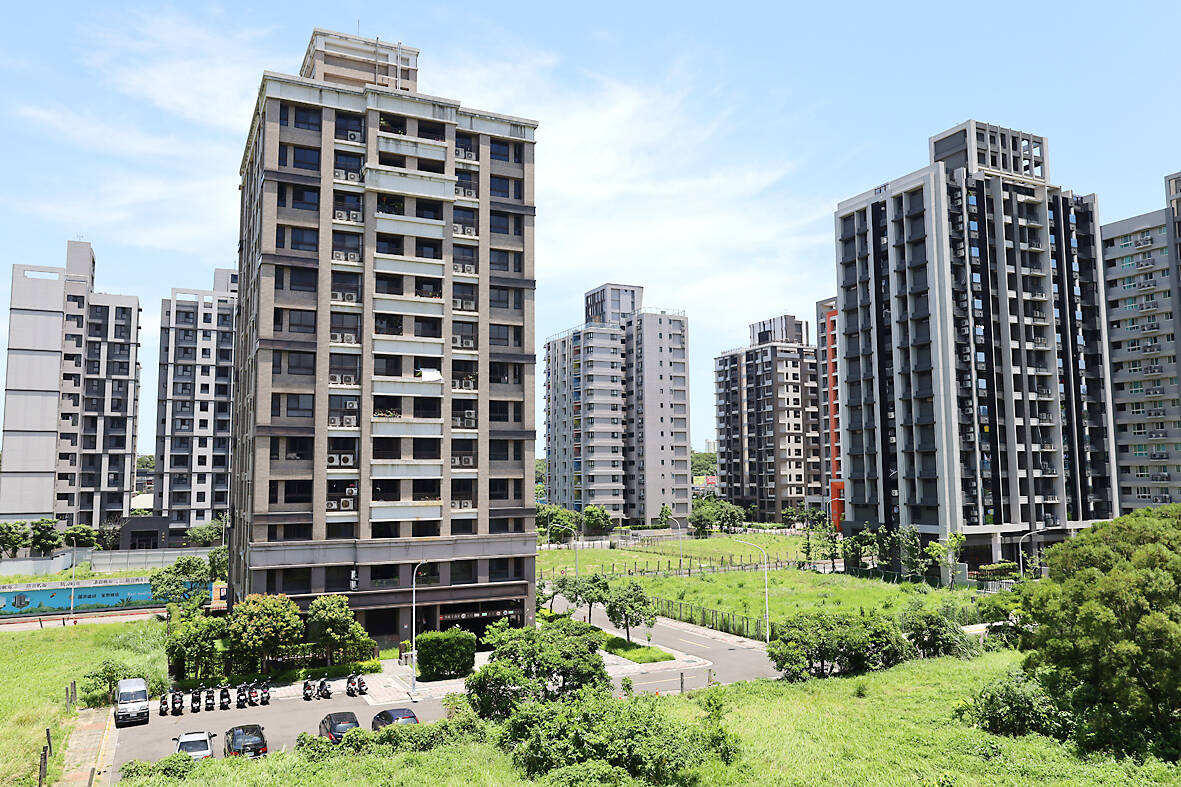
Photo: Thomas Bird, Taipei Times
New York-born economist Glaeser recognizes that cities are made of people, not buildings, yet also understands that the more intimately people live, the easier it is for them to interact. Put simply, tall, highly-dense cities improve worker productivity by eliminating arduous commutes and by cultivating cooperation. This is because, if you live in a tall building near a vibrant city center, you’ll likely dine out or use shared public spaces like parks. In doing so, your life becomes more social. Ideas are exchanged, business alliances are forged and the wheels of innovation turn.
This doesn’t happen if you live miles away from downtown and spend much of your free time fondling your phone on a bus, as is the case for many Taipei denizens.
Recently I took the 11pm train to Taoyuan International Airport (桃園國際機場) to meet a friend. On the way, I got chatting with a young graphic designer.
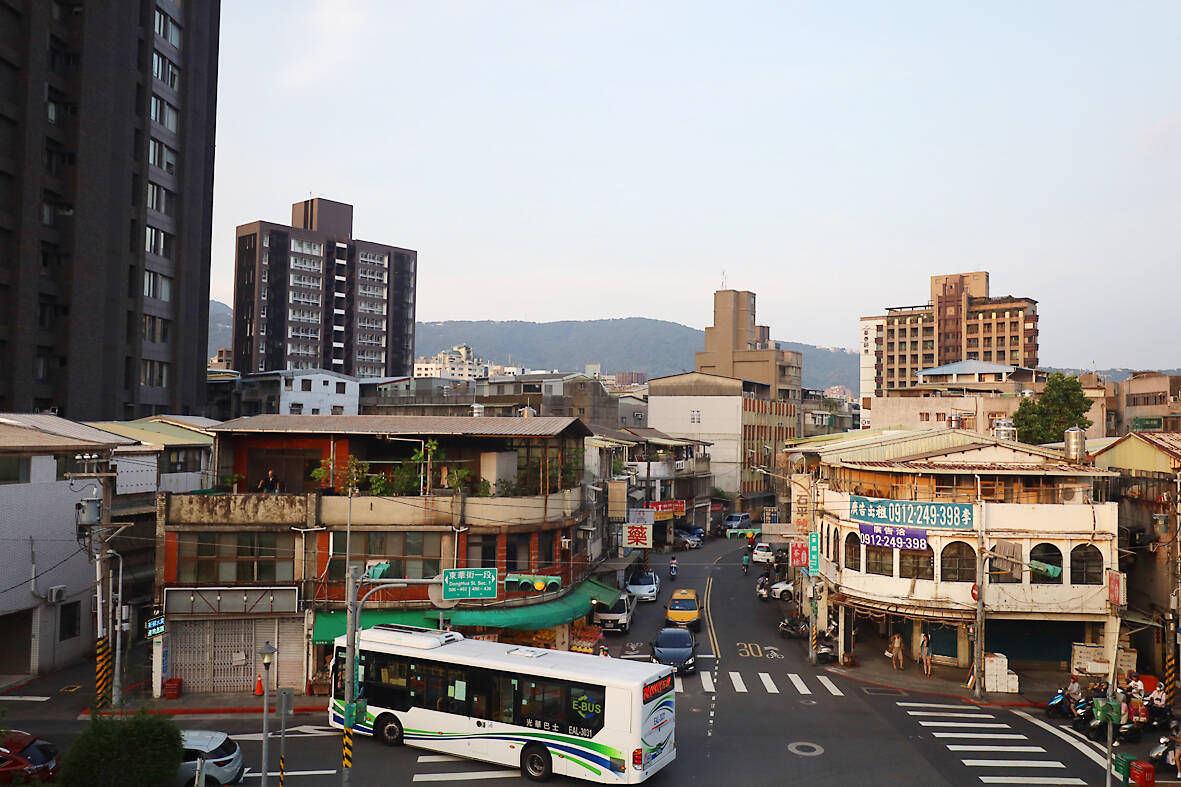
Photo: Thomas Bird, Taipei Times
“Where are you heading?” I asked, imagining an overseas trip.
“I’m on my way home, who can afford the rent in Taipei these days?”
The sentiment is not unusual.
Danhai New Town (淡海新市鎮) in New Taipei City’s Tamsui District (淡水區) was, until 15 years ago, largely rural, the domain of fish farms and fields. Nowadays, it is the focus of hot property speculation, despite the fact it is some 26 kilometers from Taipei 101 and the Central Business District in Xinyi (信義區).
The reason people are willing to live over an hour away from their workplace is simple, according to the Tamsui-based real-estate agent Chang Chun-kai (張鈞凱) I spoke with: “The average price in Tamsui is NT$300,000 per ping (坪, 3.3 square meters) whereas in Taipei it’s well over NT$1 million.”
He also told me seven out of 10 Tamsui residents worked in the city.
The view from Taipei 101 alludes to why this is the case. Amidst the occasional office block or modern apartment complex, much of the cityscape is still the domain of old flats stacked five or six stories high — the maximum height for buildings with no elevators. With such a propensity of low-rise, low-grade properties, it is little wonder that the municipality of Taipei is only home to 2.6 million people despite being almost as large as the territory of Hong Kong, which has a population of 7.5 million people.
Taipei’s rustic old quarters might be evocative areas to walk around but they don’t stand close inspection, nor would you want to live in a building where the concrete has cracked, leaky pipes protrude walls, dark and cluttered hallways link dank and crowded rooms rising to rooftops housed in rusting, corrugated iron.
The historical reasons for building such poor housing are myriad. Many point to The Chinese Nationalist Party’s (KMT) belief that it was only squatting in Taiwan, so it didn’t invest too heavily in housing.
What is clear is that shabby, outmoded buildings dominate the valuable land that could be put to far better purposes, either by accommodating Taiwan’s young and talented in affordable high-rises or by providing them with state-of-the-art places to work in.
And, while the status-quo persists, Taipei is paying a huge price in lost worker productivity due to the thousands of daily hours spent shuttling to and from work on buses, trains, scooters or in cars.
TALL IS GREEN
Greater Taipei’s sprawl is not just unsightly, it is also exacerbating the climate crisis, as carbon is belched from vehicles moving people between the city and satellites like Danhai that carpet over precious greenbelt. Skyscrapers would mitigate these emissions as high density would enable people to walk, or make short public transport journeys, to work.
The skyscrapers themselves could also be designed with the environment in mind. Urban planners only need to take a leaf from Singapore’s green handbook to learn of the new concept “biophilic architecture” which the Lion City is pioneering in order to “put nature at the heart of construction.”
Examples of this include the 27-story mixed-use hotel and office skyscraper Oasia Hotel Downtown, which is home to 54 species of plants and trees, 33 of which are found in its sky gardens. The building has a green plot ratio of 1,100 percent, which means the total area of plants on the building can compensate for the lack of greenery on 10 similar-sized sites.
Taiwan already has the knowhow to build big while thinking green. When you leave Taipei 101 you might notice a sign celebrating the building’s recognition from Leadership in Energy and Environmental Design (LEED) as “As the World’s Tallest Green Building” in 2011 and “A World’s Paradigm in Green Habit Management” in 2016, due to its smart energy management control system and other innovative features.
Indeed, a technically advanced and creative city like Taipei should have no difficulties resourcing the talent to build a green high-rise city. The only question is that of political will.

Most heroes are remembered for the battles they fought. Taiwan’s Black Bat Squadron is remembered for flying into Chinese airspace 838 times between 1953 and 1967, and for the 148 men whose sacrifice bought the intelligence that kept Taiwan secure. Two-thirds of the squadron died carrying out missions most people wouldn’t learn about for another 40 years. The squadron lost 15 aircraft and 148 crew members over those 14 years, making it the deadliest unit in Taiwan’s military history by casualty rate. They flew at night, often at low altitudes, straight into some of the most heavily defended airspace in Asia.

Beijing’s ironic, abusive tantrums aimed at Japan since Japanese Prime Minister Sanae Takaichi publicly stated that a Taiwan contingency would be an existential crisis for Japan, have revealed for all the world to see that the People’s Republic of China (PRC) lusts after Okinawa. We all owe Takaichi a debt of thanks for getting the PRC to make that public. The PRC and its netizens, taking their cue from the Chinese Communist Party (CCP), are presenting Okinawa by mirroring the claims about Taiwan. Official PRC propaganda organs began to wax lyrical about Okinawa’s “unsettled status” beginning last month. A Global

Taiwan’s democracy is at risk. Be very alarmed. This is not a drill. The current constitutional crisis progressed slowly, then suddenly. Political tensions, partisan hostility and emotions are all running high right when cool heads and calm negotiation are most needed. Oxford defines brinkmanship as: “The art or practice of pursuing a dangerous policy to the limits of safety before stopping, especially in politics.” It says the term comes from a quote from a 1956 Cold War interview with then-American Secretary of State John Foster Dulles, when he said: ‘The ability to get to the verge without getting into the war is

Like much in the world today, theater has experienced major disruptions over the six years since COVID-19. The pandemic, the war in Ukraine and social media have created a new normal of geopolitical and information uncertainty, and the performing arts are not immune to these effects. “Ten years ago people wanted to come to the theater to engage with important issues, but now the Internet allows them to engage with those issues powerfully and immediately,” said Faith Tan, programming director of the Esplanade in Singapore, speaking last week in Japan. “One reaction to unpredictability has been a renewed emphasis on